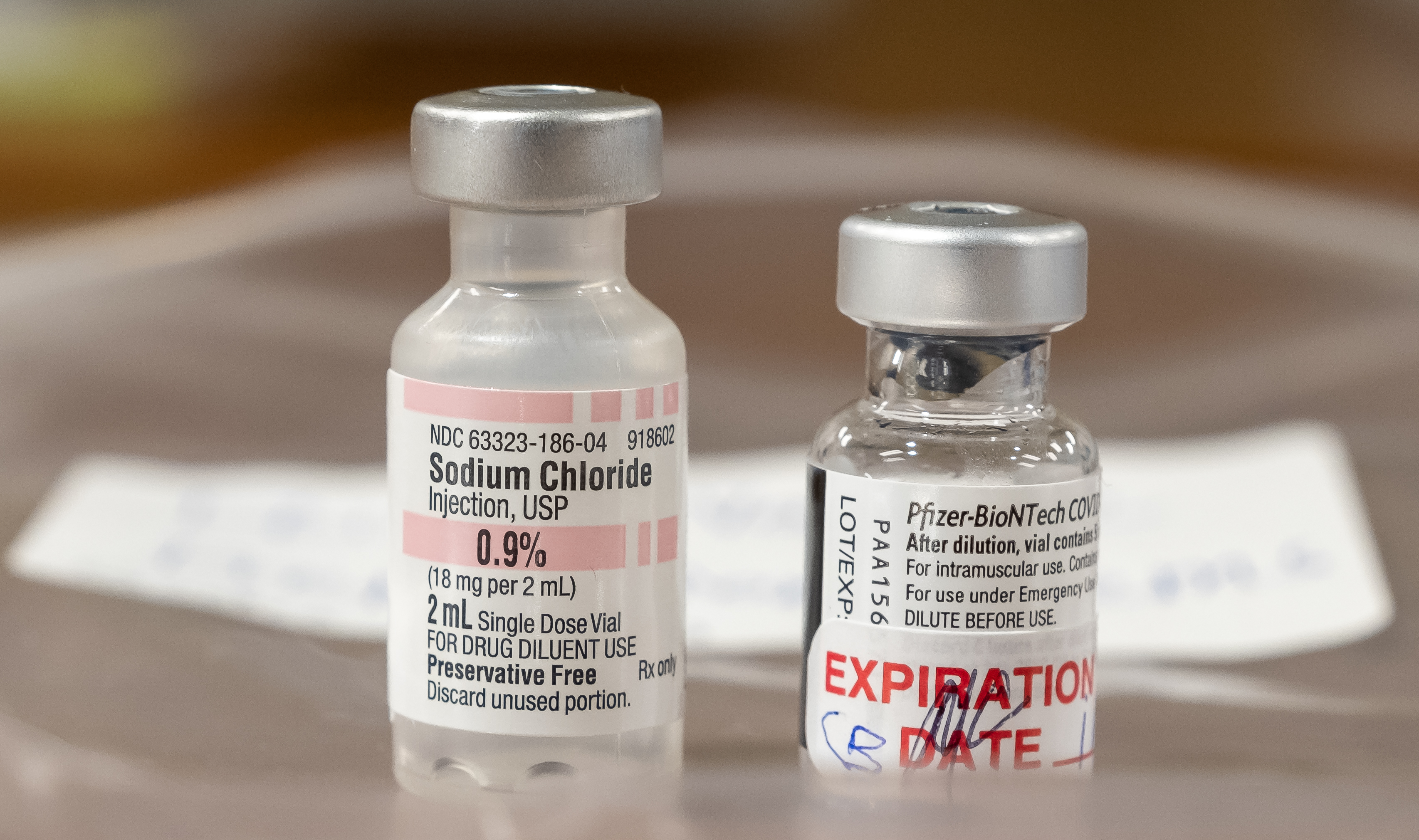1st COVID-19 vaccine vial used in the US headed to museum

The vial will be part of an exhibit planned for next year.

When a New York nurse became the first American to receive a dose of an FDA-authorized COVID-19 vaccine in December, it was a moment that would go down in history. Now, that first vaccine vial is heading to a history museum, to be displayed in an exhibit planned for next year.
On Wednesday (March 10), the Smithsonian's National Museum of American History announced that it had acquired the now-empty vial of Pfizer-BioNTech vaccine used for that historic shot, which was administered to intensive-care nurse Sandra Lindsay on Dec. 14, according to a statement from the Smithsonian. Other materials, including Lindsay's vaccination record card, scrubs and hospital identification badge, will also become part of the museum's collection, the statement said.
The materials were donated by Northwell Health, the New York health care system where Lindsay works. Northwell Health also donated other materials connected to the first vaccine doses, including the special shipping materials that were needed to maintain the vaccine at ultra-cold temperatures.
Related: Quick guide: COVID-19 vaccines in use and how they work
"These now-historic artifacts document not only this remarkable scientific progress but represent the hope offered to millions living through the cascading crises brought on by COVID-19," Anthea M. Hartig, the museum's director, said in the statement.
Since April 2020, the museum has been collecting artifacts to document the pandemic and its effects on society. Some artifacts volunteered to the museum include trash bags that healthcare workers wore when supplies of protective gear were low, and signs that people made to show support to their loved ones who were locked down in assisted care facilities, according to Smithsonian Magazine.
The museum's collection already contains a number of historical items related to science and medicine, including penicillin mold from Alexander Fleming's laboratory and Jonas Salk's original polio vaccine, the statement said.
Get the world’s most fascinating discoveries delivered straight to your inbox.
The museum is working on a 3,500-square-foot exhibition titled "In Sickness and in Health," which will feature items related to America's efforts to control and cure illnesses, such as objects from the campaign to eradicate smallpox, as well as objects from the COVID-19 pandemic. The exhibit, which will also include the Northwell Health vials, is planned to open in 2022, Smithsonian Magazine reported.
Originally published on Live Science.

Rachael is a Live Science contributor, and was a former channel editor and senior writer for Live Science between 2010 and 2022. She has a master's degree in journalism from New York University's Science, Health and Environmental Reporting Program. She also holds a B.S. in molecular biology and an M.S. in biology from the University of California, San Diego. Her work has appeared in Scienceline, The Washington Post and Scientific American.


